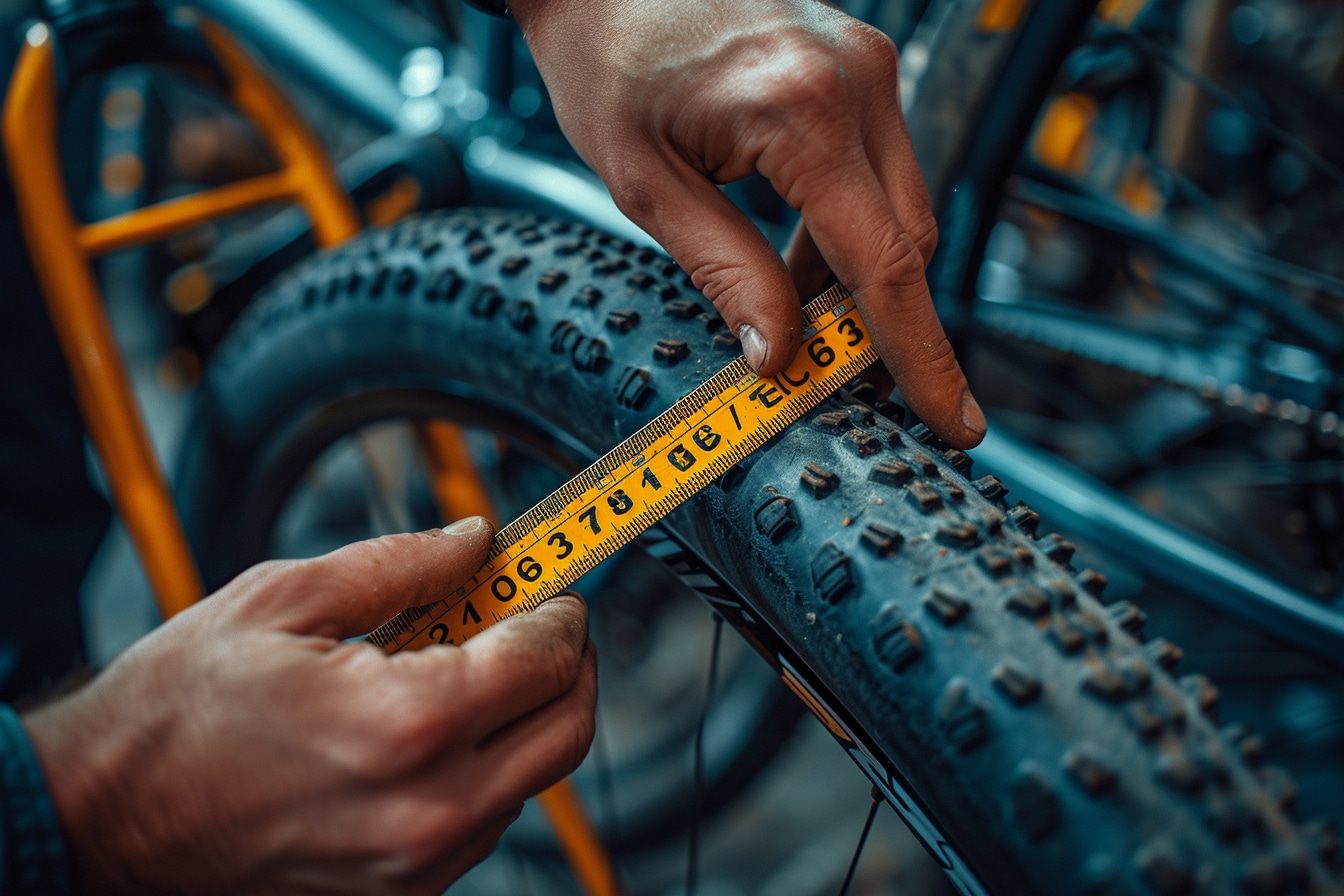Unraveling the Mystery: A Comprehensive Guide to Determining Your Bicycle’s Inner Tube Size

Getting started with replacing an inner tube can seem difficult without prior technical knowledge. It’s a challenge for any cyclist, whether amateur or experienced. The size of the inner tube is a fundamental parameter in the performance and comfort of your bike. Knowing how to measure this part correctly is therefore crucial to avoid errors and disappointments. Choosing the right inner tube carefully preserves the durability of your tires and ensures an optimal cycling experience.
Identify the necessary dimensions
Locate the indications on the tire constitutes the first step which looks like a challenge. Typically, manufacturers make this task easier by printing the dimensions on the sidewalls of the tire. These figures correspond to standards which are often presented in the form of double marking: the European system (ETRTO) and the English system. ETRTO is a format that consists of two numbers separated by a line – the first indicating the width and the second the inner diameter of the tire, both in millimeters.
Knowing the exact dimensions of the tire allows you to accurately identify the corresponding inner tube. Because choosing an inner tube is a question of precision, and every detail counts.
Understanding Diameter and Width

Navigate through technical specifications requires special attention to detail. The diameter is essential because it must correspond exactly to that of your wheel. It is imperative not to confuse the diameter with the outer diameter of the tire, as this could lead to inappropriate selection.
The width of the inner tube is just as critical, as a tube that is too narrow could overtighten and weaken, while a tube that is too wide could bend and cause punctures. It is therefore essential to select a tube whose range of accepted widths corresponds to that of your tire.
Types of valves, a strategic choice
Beyond size, the type of valve is a strategic choice that should not be overlooked. Presta and Schrader valves are the most common, and each has its own characteristics. The Presta valve, often found on road bikes, is thin and long, while the Schrader valve, common on off-road bikes, is reminiscent of the valve on a car tire.
It is essential to select an inner tube with the correct type of valve for your wheel, because an incompatibility between the valve and the rim can cause inflation difficulties or even damage.
Myths and facts about inner tubes
A world of beliefs surrounds inner tubes. Some cyclists claim that thicker tubes prevent punctures better. If a certain logic can emerge, it is necessary to understand that thickness is not the only protective factor. The quality of the rubber and the method of repair in the event of a puncture are equally crucial.
Equipping yourself with a high quality inner tube can be a profitable investment. Not only for robustness, but also for driving comfort. The weight of the inner tube influences the total rolling weight, which can have a significant impact on the smoothness of pedaling.
Precautions and final advice
Before making your purchase, take the time to check the information carefully. An expert eye can sometimes detect details that you would otherwise miss. If doubt persists, do not hesitate to seek advice from a specialist or refer to product comparisons.
Once you have found the right inner tube, consider purchasing a quality pump and a repair set. These tools will allow you to confidently manage the hazards of your cycling outings.
The size of an inner tube is not an insurmountable conundrum. With accurate information and a clear understanding of specifications, choosing the right inner tube becomes a simple formality. Take this thoughtful approach and your bike will thank you with many miles of trouble-free fun.
Comments
Leave a comment